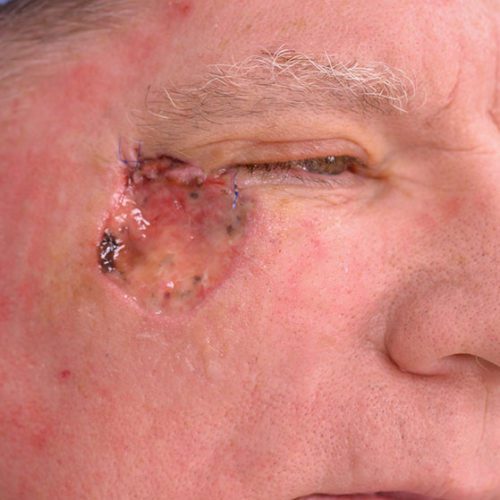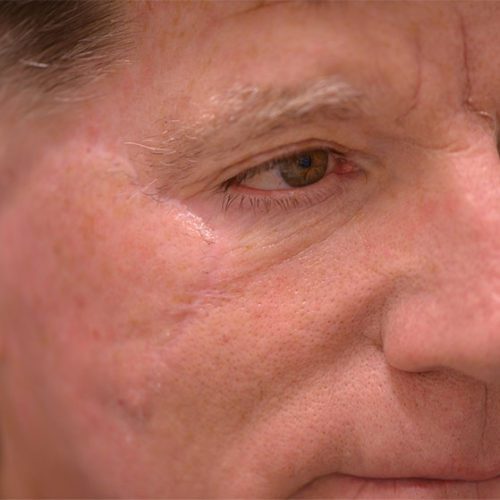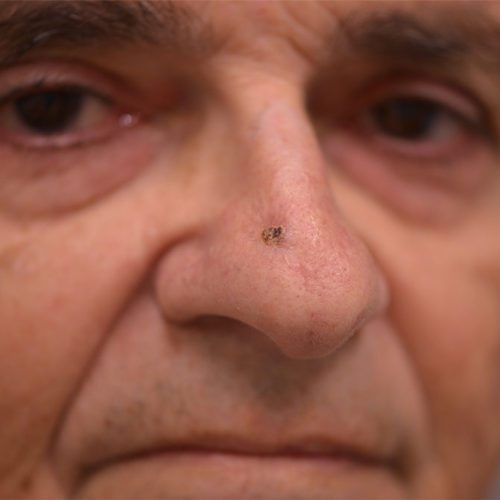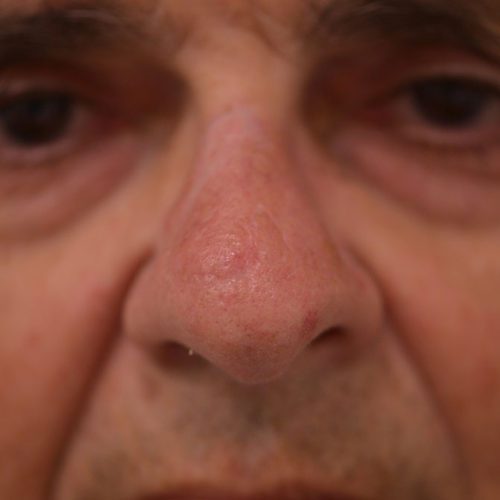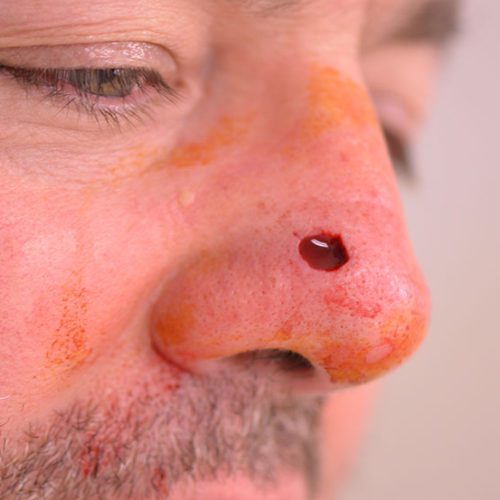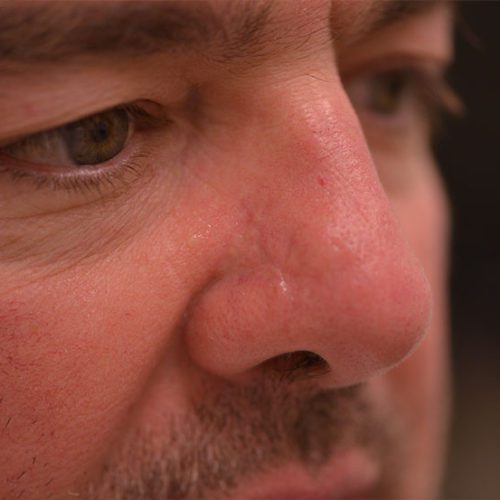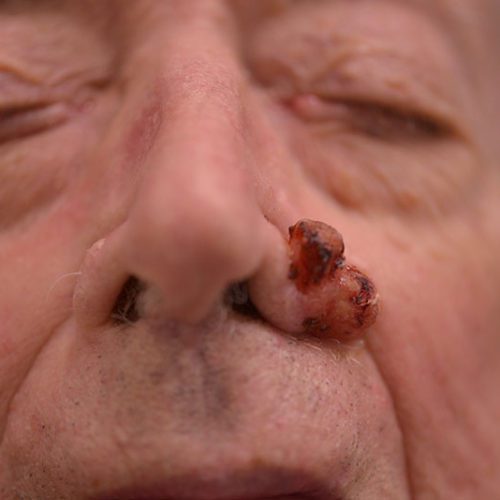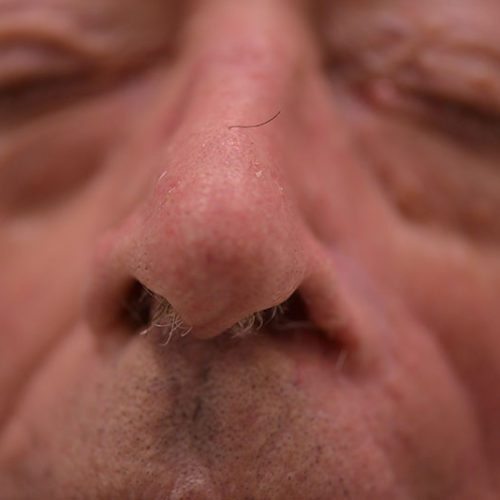Mohs Surgery in Palos Verdes
Skin cancer is an unfortunately common occurrence these days. Approximately a quarter of the population will develop it in some form or another. Over the years, a series of treatments for skin cancer have been developed to address the different types. Mohs microsurgery is a surgical technique that can treat common forms of skin cancer (basal cell and squamous cell carcinomas—the commonest types) and is one of the most effective treatments available. Due to the microscopic nature of the procedure, Mohs surgery is not only better at removing the tiny cancer cells that escape other techniques but also results in smaller scars and quicker recovery.
What Are the Benefits of Mohs Surgery?
Highly Effective
Mohs surgery is one of the most effective treatments for skin cancer available. Mohs surgery successfully removes skin cancers with effectiveness between 94 to 99 percent depending on whether the tumors have already been treated in the past.
Maintains Healthy Skin
A significant advantage of this technique is that it removes only a minimal amount of healthy skin from around the cancerous growths and does so in very thin layers. This means that the incision locations heal more easily, reconstruction is facilitated and scarring is minimized.
Minimal Downtime
Due to the smaller size of the excisions, Mohs can usually be completed and reconstruction performed in a single day. Recovery from the surgery is relatively quick and easy, depending on the extent of the excision and the complexity of the reconstruction. This makes Mohs surgery attractive to patients who seek fast and effective results.
What Is the Mohs Surgery Process in Palos Verdes?
Consultation
During the consultation, Dr. Boyd will examine the cancerous growths, review medical records, and determine if surgical treatment is appropriate. Dr. Fein, a board-certified dermatologist, Mohs surgeon, and dermatopathologist (who shares an office with Dr. Boyd) performs the Mohs surgery with Dr. Boyd carrying out the reconstruction on the same day. Dr. Boyd will also make sure you understand how the operation will occur, and what your recovery and reconstruction options are. He ensures that all of his patients are fully informed before they undergo surgery.
Procedure
Mohs surgery begins with the injection of local anesthesia around the targeted location. This is to ensure the patient’s comfort during the operation. Using a scalpel, Dr. Fein carefully removes a shaving of the visible portions of the tumor from the skin. He will examine the specimen under the microscope to see if the margins are clear of tumor. If not, he will take further thin slices until there is no tumor left. Most operations remove all cancerous cells within three attempts, but, in rare cases, it may take more.
Reconstruction
After all cancerous cells have been removed, Dr. Boyd will determine the best means of closing the incision. For a small defect, bandaging it and letting it heal naturally over the next few weeks may be the best option. For larger ones, local tissue rearrangements (flaps) or skin grafts may be needed to ensure prompt healing with no distortion and optimal cosmesis.
Results
Mohs surgery has the highest success rates among skin cancer treatments. The odds of recurrence following the operation are extremely low because Mohs surgery removes all cancerous cells.
What Are Your Mohs Surgery Concerns?
Patients may experience some swelling and minor discomfort in the week following the operation. This can usually be treated with over-the-counter TYLENOL®. Be sure to avoid pain relievers like aspirin that can cause an increased risk of bleeding. Most patients can resume normal activities within a day or two, depending on the incision’s location and size. Most patient’s incisions are fully healed within two weeks, although the final result may not be apparent until scar maturation at about six months.
All surgical procedures and cancer treatments leave scars, and Mohs is no exception. However, due to the nature of the procedure, the scarring from Mohs surgery is generally as minimal as possible.
In the rare event that you require a skin graft to cover the treatment area, you will have scars in both the donor and recipient areas; however, these usually blend into your skin very well.
Mohs surgery is usually covered by health insurance, and a patient’s out-of-pocket costs for Mohs surgery will vary depending on their respective insurance provider and plan. Our office can check your coverage when you come in for a consultation, so long as you bring your health insurance information with you.
Most patients will experience minor pain and discomfort in the first few days following the operation. This may vary depending on how (or if) the incision is closed at the surgery’s conclusion. Most patients find that TYLENOL® is sufficient to treat their discomfort.
Frequently Asked Questions
As with any surgical procedure, there are risks of side effects. These may include:
- Bleeding
- Scarring
- Distortion
- Infection
- Itching
- Temporary or permanent numbness
It is highly unlikely that a patient will need multiple operations to treat skin cancer using Mohs surgery. This technique is highly effective, and it is extremely rare for new cancerous growths to reappear in the treated location. However, it will not prevent new cancers developing in other locations. Remember, it is an accumulation of a lifetime’s sun exposure that leads to propensity to develop skin cancers. That is why they mostly occur on sun-exposed areas, particularly the face.
There are a few different reconstructive techniques depending on the size and depth of the excision. These may include: leaving the defect unclosed and applying daily dressings; simple direct wound closure with stitches; local tissue rearrangements (flaps); full-thickness and split-thickness skin grafts, as well as other reconstruction techniques.
Yes. Mohs surgery uses a local anesthetic. With local anesthesia, patients remain wide awake. The sensory nerve endings are chemically ‘frozen’ (as at the dentist) making the procedure painless. Impaired nerve responses in the targeted area can make it unsafe to do certain activities, such as driving, depending on the location on the body.
Patients should stop smoking immediately on diagnosis and (after consulting with their primary care physician) cease taking any medications that may promote bleeding or inhibit healing. Patients should refrain from drinking alcohol or caffeine the day before the operation and get a good night’s sleep. It is best to refrain from wearing makeup or other topical products over the area to be treated for at least a day before the operation. Patients should shower and shampoo either the night before or the morning of their operation to ensure the treatment area is clean. Finally, patients are encouraged to bring a book or something similar to occupy themselves during the serial excisions and microscopic examinations. One can expect to remain in the operating or waiting room for an hour or two at a time between excisions.
Patients are advised to keep their incision sites clean and dry for at least 24 hours after their operation. After that, it is usually safe to shower. Topical creams and similar products should not be placed on or around the incisions for at least one week. Depending on the manner of closing the incisions, specific aftercare instructions will be provided following the operation. Most other skin treatment options should be avoided for three to six months.
